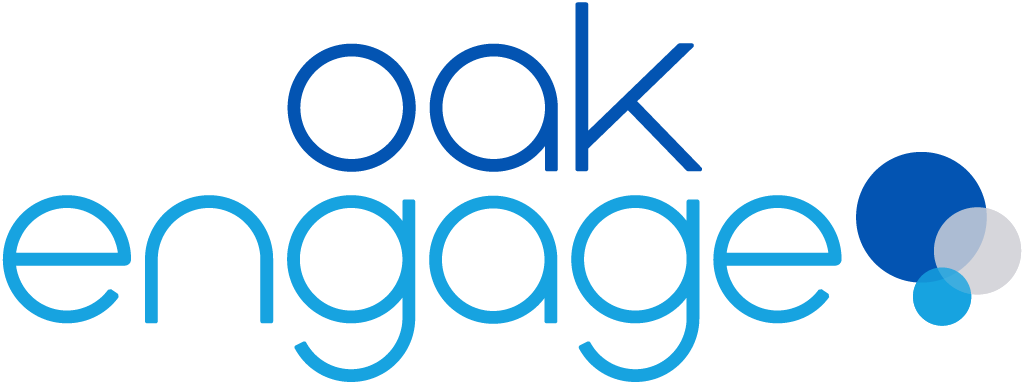Having engaged employees completely transforms your business. Think of how well your business will run when your employees are engaged...
They’ll be happier, more productive and loyal to their job role. All good things within business start with the happiness of your employees. It’s no wonder that employee engagement (an already hot topic) is becoming more of a priority for HR departments.
How can you find out if your employees are engaged or not? All you need to do is start measuring employee engagement. The good news is that it’s incredibly easy when you have the right tools and solutions. In this blog post we’ll give you everything you need to start measuring how your employees feel:
- Why measure employee engagement?
- Why use surveys to measure employee engagement?
- Employee engagement survey questions
- How to get the most out of employee engagement surveys
Why measure employee engagement?
If your employees aren’t engaged, then it’s bad news for your business. It’s shocking to discover that 85% of employees are disengaged at work. That’s an overwhelming majority of people who have no attachment or passion towards work.
Engaged employees have a mental and emotional connection towards their place of work. They’re more productive and yield higher profits. They are incredibly loyal and have a much better work life balance.
Measuring employee engagement helps you to level up your businesses. It allows you to identify patterns and show you where you might need to make improvements. Having measurables means you can easily work towards making improvements.
Making changes shows you’re creating a workplace that people want to be part of. However it is vital that you take action from your results. Average engagement scores are as low as 27% when managers do not review or take action on survey results.
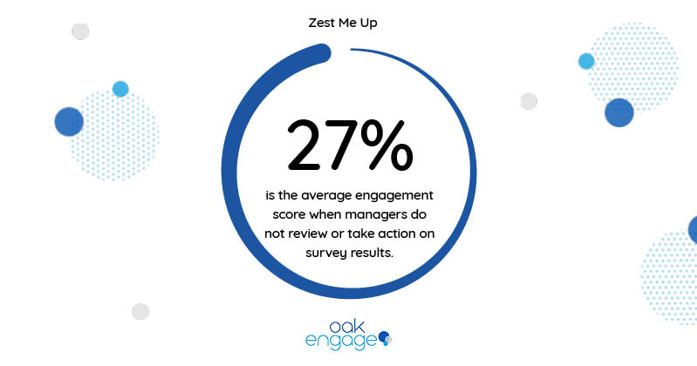
Why use surveys to measure employee engagement?
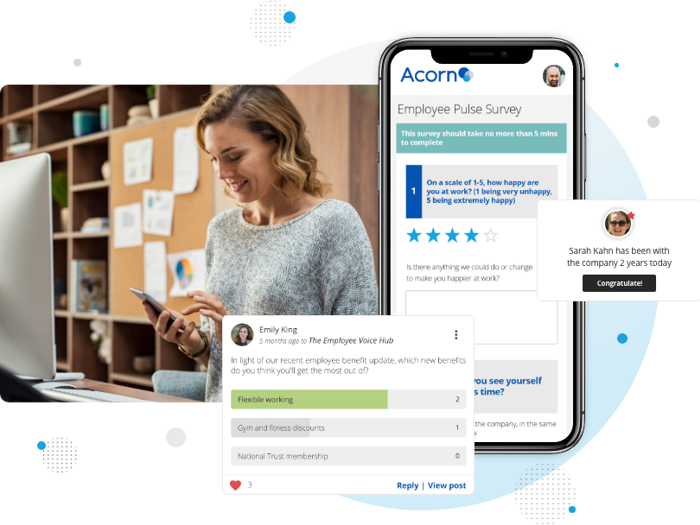
Evaluating engagement is hard because it’s an emotion. Surveys are great for measuring engagement because it gives your employees the chance to actually express their individual viewpoints and dig deeper into the reasons why. Remember that emotions are subjective.
There are a range of factors that can influence employee engagement:
- Employee satisfaction
- Employee alignment
- Company culture
- Remote work
- The future of the business
- Leadership and management
Decide what you want to discover from your employees. It’s important to base your questions around the kinds of concepts you want to explore. An employee satisfaction question might be ‘Would you recommend working for Oak to a friend?’
Create a list of relevant questions for your organisation so you can discover how your workforce feels.
Employees want to feel like their voices are heard and that their opinions are valued. Giving them a way to communicate is great for getting honest feedback, but remember to provide anonymity in your surveys.
Employee engagement survey questions
Having the right questions is crucial to understanding your workforce. Decide what you want to find out from your employees and how you'll use the results to make improvements. When creating your survey, be sure to use a mixture of questions - open and closed. We have a range of questions on employee engagement for inspiration:
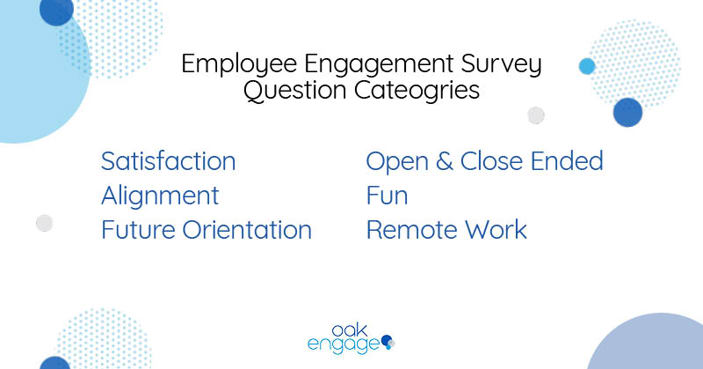
Satisfaction Questions
Employee satisfaction questions relate to your employees' happiness levels. Satisfied employees are proven to be more happy, engaged and productive. This has a positive impact on your business. Measuring satisfaction is an important step in creating a positive work environment. Having a satisfied and happy work force means you'll retain top talent.
- Are you satisfied working for [company name]?
- To what extent are you satisfied with the culture of [company name]?
- Would you recommend our company to someone you know?
- Is there anything we can do to improve our wellness programme?
- Do you think we’re missing any perks?
- How can we improve your work environment?
Alignment Questions
Employee alignment is the way your employees view the company's vision and goals. Engagement and alignment have a strong impact on one another. If your employees aren’t aligned with your vision, they won’t be motivated to perform their best. This can result in employees becoming disengaged from their role.
Employees who are aligned view their work enthusiastically. They’re invested in the work they’re doing. Gauge how aligned your employees are with these questions:
- Are company goals clear to you?
- Do you resonate with the organization's goals?
- When the organization makes changes do you know why?
- Do you agree with the approach taken by leaders to reach company goals?
- Do you believe in the products and services our company sells?
- The leaders of [company name] communicate a vision that motivates me
Future Orientation Questions
These types of questions are useful for learning why your employees work for you. Find out how enthusiastic they are about the company’s future. Employees might have suggestions for company initiatives. You might also be able to identify why employees might be considering leaving. Here are some future orientation questions for your engagement survey:
- Do you see [company name] succeeding?
- I feel like this is a good place for me develop my career
- I understand the steps I’m taking next for my career development
- I see myself working here long term
- Does your job align with your career goals?
- What are you most excited about for the company's future?
Close-Ended Employee Engagement Survey Questions
Close-ended questions are important for getting quantitative data. This type of data is essential for analysis. These are the types of questions that will show a clear overview of how your employees feel. Here are some examples of close-ended questions:
- Do you feel like your work has an impact on the organisation?
- Do you have your say when new ideas and concepts are introduced at work?
- Are you happy with your specific job role and requirements?
- Do you feel as if your mental health is cared for?
- Do you feel confident in your manager's leadership skills?
- Does [company name] approach growth and development the correct way?
- Do you feel motivated to turn up as your best self at work?
- Do you find your work meaningful?
Open-Ended Employee Engagement Survey Questions
Engagement surveys are used to gain valuable feedback and insights from your employees. Make sure you give employees the chance to expand on their reasons. Including open- ended questions allows you to do this. These types of questions provide rich, qualitative data. This in depth data explains statistics from your close-ended questions. Here are a couple of questions that you can incorporate into your engagement survey:
- Do you think there is a good way to embrace new ideas and suggestions for the organisation?
- How can [company name] improve in it’s diversity and inclusion practices?
- Is there anything that would make you feel more connected with your co-workers and managers?
- How can we improve our corporate wellness programme?
- Is there anything you would change about your team?
- Does anything need to be changed to help you achieve a better work-life balance?
- Do you think there is anything that could make our products/ services better?
- Does your work environment allow you to work distraction free when you need to?
Fun Employee Engagement Questions
Incorporating fun questions in your survey makes completing the survey more enjoyable. These types of questions means employees can get creative with their answers. You can discover more from your employees. You can frame questions in a way that might uncover views about the company you wouldn’t have otherwise. Include these in your survey for a bit of fun and personality:
- What changes would you make if you were CEO for the day?
- If you had an unlimited budget what would you want us to buy for the office?
- If you could swap places with a co-worker for a day, who would you choose?
- Describe your job as if you were explaining it to a five year old
- If you could make everyone in the company read one book or watch one movie, what would it be?
- What’s some interesting information you have learned recently?
Remote Working Questions
Remote work is fast becoming our new normal. With hybrid working models set to stay it’s important to find out how your employees feel about remote work. Companies are considering the best ways to work remotely. Find out how your employees feel about remote work. See if there are ways you can improve their remote work situation with these questions:
- Has remote working affected your productivity?
- Have you established a good routine working from home?
- Do you have all the tools required to effectively work from home?
- What changes could be implemented to help you work from home better?
- Do you have a healthy work life balance when working from home?
- Do you have a suitable workspace?

How to Get the Most out of Employee Engagement Surveys
Engagement surveys are a brilliant tool for improving your workplace. Especially when conducted correctly and if you actually take action from them. Zest found that just 20% of employees believe their manager will act on survey results. This shows a lack of faith and trust from employees that their feedback is listened to.
It’s not just deciding on questions and then getting the results back. Engagement surveys are meant to be used to improve the workplace and take action. There are few things to bear in mind when creating and distributing your survey to ensure you get the most out of it:
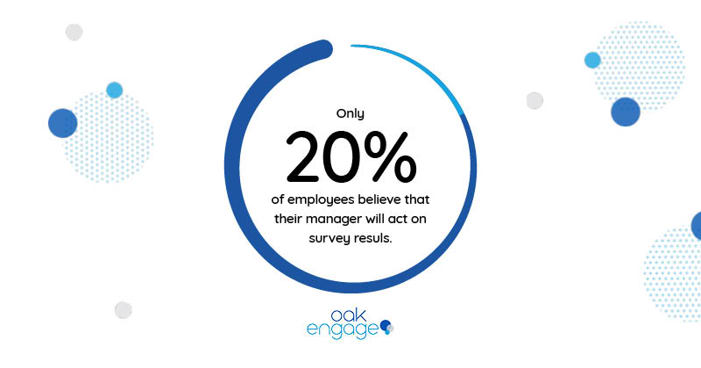
Design & Structure: Start off by thinking about what you want to find out from your employees. It will be different for each business. Do you want to find out how they feel about remote work or your company goals? Maybe you want to find out their thoughts on leadership. Think of each question as a chance to improve a certain area of the business. Use this to inform the questions you ask.
Questions: Make sure questions are easy to understand. It’s recommended that you use a mixture of questions. Use closed questions to gain data and get a clear overview of particular subjects. Open ended questions compliment close ended questions. They identify the why's behind your data. Combining these types of questions will give a perfect overview of opinions. You can then work out how to start implementing changes.
Anonymity: Ensure your employees have anonymity when completing engagement surveys. Having anonymity means that your employees will feel more comfortable answering questions. It removes the fear of talking about sensitive or stigmatizing information. You’ll get truthful feedback when working out what needs improvement.
Distribution: Use a method that will alert everyone about your survey instantly. Emphasize the importance of staff completing engagement surveys. It’s in everyone’s best interest to complete the survey. The more responses you have means you'll be able to make meaningful changes. Give your staff enough time to complete the survey - two weeks should be enough time!
Getting the results: Once everyone has completed the survey, review the results. Note down any data that jumps out. This will highlight any problem areas that appear. You can then start to create an action plan of how you’re going to address any issues.
Communicate the results and potential plans for change with employees. This shows that you’ve listened to what they have to say and you’re serious about taking their feedback on board. By sharing the results and any plans, it again opens up the room for any suggestions. You can find ways in which you can all work together to improve the business.
Taking action: Decide on a new strategy to address any issues or problem areas and work out how you’ll monitor it. Will you use focus groups or could you use pulse surveys to monitor changes? Whatever you choose it’s important to make sure you can measure new changes.
